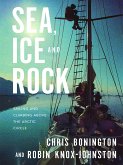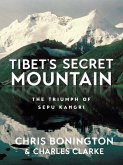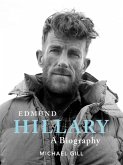The time to write about mountains only fuelled Murray's enthusiasm to climb them. The regeneration in mountaineering that followed the war saw Murray complete three Himalayan expeditions, alongside other iconic figures such as Doug Scott, Tom MacKinnon and Tom Weir, and Eric Shipton. He not only explored Himalayan peaks never before attempted by westerners, but also established the crucial Khumbu Icefall route up Everest, which paved the way for the mountain's first ascent in 1953.
Later life saw Murray return to Scotland and begin the fight to conserve the wild places that motivated him. From pioneering the John Muir Trust to fighting threats to forestry, Murray's writing is laced with a philosophical edge and a contagious appreciation for Scotland's wild places, capturing the essence of why Murray's work has been inspiring readers for decades.
Written just before his death in 1996, and with a foreword by renowned Scottish mountaineer Hamish MacInnes, The Evidence of Things Not Seen is a must-read for anyone for which the mountains are still a source of wonder.
Dieser Download kann aus rechtlichen Gründen nur mit Rechnungsadresse in A, B, BG, CY, CZ, D, DK, EW, E, FIN, F, GR, H, IRL, I, LT, L, LR, M, NL, PL, P, R, S, SLO, SK ausgeliefert werden.
Hinweis: Dieser Artikel kann nur an eine deutsche Lieferadresse ausgeliefert werden.









